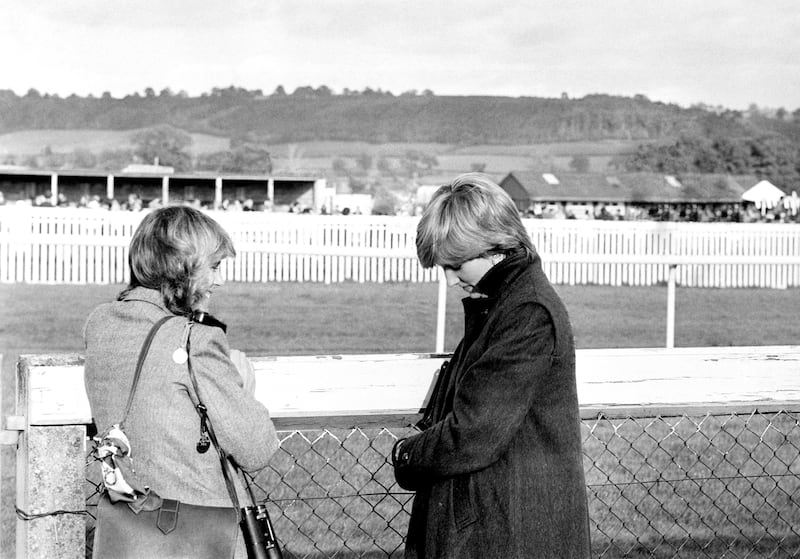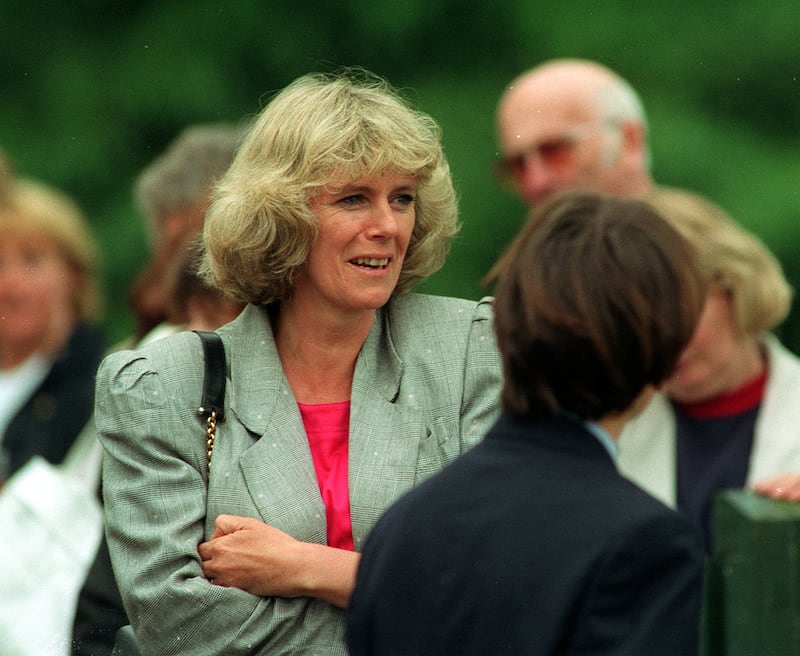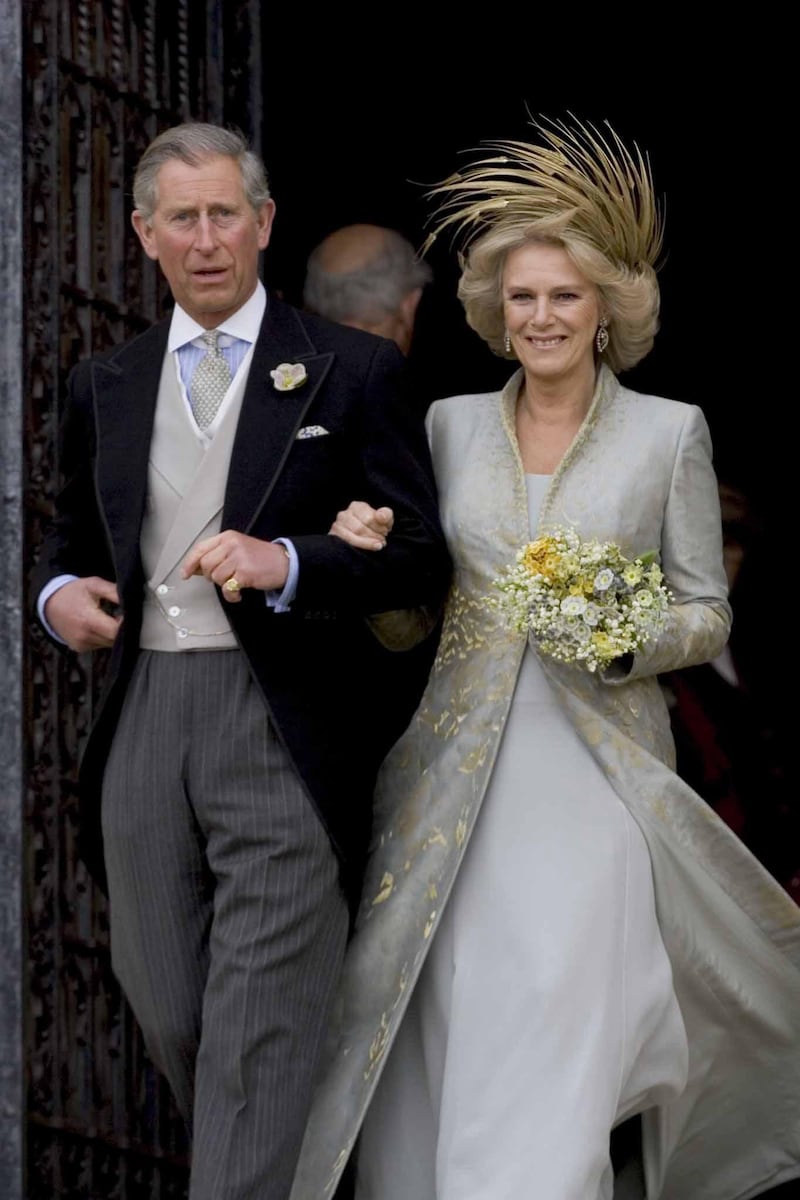Part of the identity Charles chose for himself as Prince of Wales – with many long years likely between him and the throne – was as an adopter of difficult and controversial causes.
“And it could be said Camilla was the biggest one of all,” said the royal historian and author Robert Lacey. “Her transformation becomes, really, the dominant narrative of his life. And her sitting on the throne beside his at Westminster Abbey, without any popular ambivalence, is the culmination of that.”
The long, turbulent journey of the debutante who became the vilified royal mistress Camilla Parker Bowles and now queen has been dramatic. So strong was her bond with the future king, it shattered both their marriages, outraged the establishment and saw her cast as a conniving marriage-wrecker. At times, she must have come close to wondering if it was worth it.

“It was horrid,” Camilla admitted in a rare interview, of the media scrutiny that imprisoned her in her home after the shocking death of Diana, Princess of Wales. “I wouldn’t want to put my worst enemy through it.”
READ MORE
Had Diana not died in that Paris tunnel on August 31st, 1997, acceptance of Camilla as a future queen might have been far less of a battle.
The backlash over Diana’s co-operation with a 1992 Andrew Morton book, Charles’s retaliation with a 1994 Jonathan Dimbleby book and a documentary in which he admitted adultery, then Diana’s cold anger that “there were three of us in this marriage” in the infamous 1995 Martin Bashir interview, had begun to subside.

“By the time of her death Diana had reached a rapprochement with Camilla,” said Lacey. She was moving on with her own life, while Charles’s campaign for a second marriage was well under way. The first tentative steps had included a 50th birthday party for Camilla at Highgrove, with guests including Camilla’s ex-husband.
It was a very public statement of his intentions. But Diana’s death weeks later made it impossible for the couple to be seen together publicly.
Charles handed responsibility for getting “Operation PB”, as aides called it, back on track to his deputy private secretary, Mark Bolland. Described in Valentine Low’s book Courtiers as “clever, charming, manipulative” and “one of the most colourful and interesting players in the royal drama of the last 30 years”, Bolland performed his task skilfully.
He engineered for the couple to be photographed coming out of a party at the Ritz hotel in London in 1999. In her biography of Camilla, Penny Junor said: “Many people in the Prince’s office thought it was too early for them to be seen together. As one of them says: the sky didn’t fall in. And, thanks to Bolland’s gambit, public opinion started turning round. But that was Mark – he was always pushing things on ... he wanted to achieve the goal of getting them married.”

Junor continued: “Next, Camilla started turning up unannounced at public engagements, dinners and events where the media was present. ‘It was quite hard on her, people pointing and whispering, but she coped really, really well,’ said one person close to her. ‘What I noticed early on was the effect she had on the room. She would be sitting at the table, listening to him behave badly, and all she would have to do is look at him and the whole atmosphere would change ... It did make him behave a little bit better, because when she wasn’t there, boy, could he kick off!’”
Then there was her first meeting with William, details of which, the Duke of Sussex states in his memoir, Spare – blaming Camilla and an unnamed Bolland – somehow reached the press. Those close to her have denied responsibility for the leak. Perhaps it was just a careless remark. “It wasn’t her right to reveal that. Because actually, in terms of the message, which was that of royal acceptance of the most important and personal sort, it was even more important in a way than acceptance by the queen,” said Lacey. “She would certainly have learned a lesson from that.”
Once referred to by Elizabeth II, according to one biographer, as “that wicked woman”, the late queen and Camilla finally met in June 2000 at a private lunch party for the former king of Greece, hosted by Charles and attended by William and Harry. “It was quite significant. It represented the Queen’s acceptance of reality, while not exactly whooping with joy. And from that moment on, the Windsor registry office was just a matter of time,” said Lacey.
Charles and Camilla married on the same day as the 2005 Grand National, and at the wedding the queen told guests she was delighted to be welcoming her son and his bride to the “winners’ enclosure”. “My son is home and dry with the woman he loves,” she said, the racing metaphors seen as a sign of maternal approval.
Back in 1970, when Camilla jokingly told Charles that “my great-grandmother was the mistress of your great-great-grandfather”, few could have predicted their long and complicated journey would lead to this point.
Certainly, if her confidantes are to be believed, Camilla did not. “Never in a million years” did she think she would become queen, her friend the Marchioness of Lansdowne told the Sunday Times in advance of the coronation. “She didn’t ever assume anything about whether they could even be together. It was never any sort of plan.” .
Yet this contradicts all the evidence pointing to Charles’s concerted campaign. Harry certainly believed there was a plan, describing Camilla as “dangerous” and a “villain” who “left bodies in the street” and who was happy to sacrifice him and William “on her personal PR altar”. Camilla is said to have reacted to Harry’s remarks with an eye roll.
Lacey said he believed Camilla had been “a pretty willing participant in the events leading to her throne”, but that there was “a genuine element of ‘well if that’s what Charles wants for me …’”

The ultimate endorsement came from the late queen when she used her platinum jubilee speech to make clear it was her “sincere wish” that Camilla would be queen consort – rather than the previously mooted princess consort – when the time came. “Everybody expected that statement to be about her father, and the anniversary of his death. But she used it as an endorsement of Camilla,” said Lacey.
Elizabeth clearly became extremely fond of her daughter-in-law, impressed with the causes she adopted – including that of tackling violence against women – and the way she set about the job with little fanfare. They shared a love of horses.
“What we have got here [in Camilla], after all the travails, is actually a queen who is much more like his mother than we might ever have expected,” said Lacey. “And one speculates, but the late Queen might have been actually relieved to find someone who could give her son the peace that she herself couldn’t. Because Camilla was a friend to him. She was a mentor. Clearly she plays that very important role.”
Referring to Charles’s temper tantrum during a signing ceremony in Northern Ireland shortly after becoming king, when he wrote down the wrong date and his pen started to leak, Lacey added: “If there is one episode that makes the relationship clear, it’s the exploding fountain pen. The ambivalence and difficulty Charles has with his role, and the one person who seems able to soothe him and help him with it, in a way that certainly his parents never did, is Camilla.” — The Guardian












